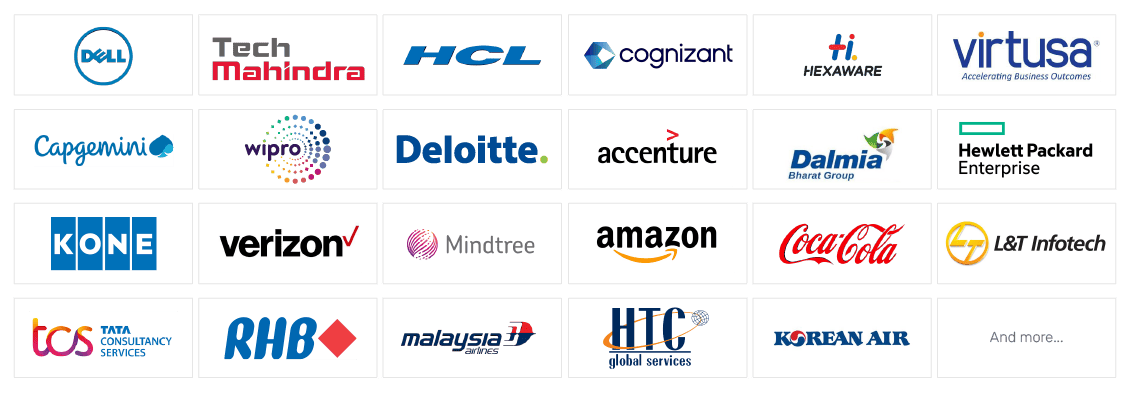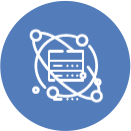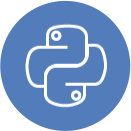Our Alumni Work At

"AI to contribute $16.1 trillion to the global economy by 2030. With 133 million more engaging, less repetitive jobs AI to change the workforce." - (Source). Data Science with Artificial Intelligence (AI) is a revolution in the business industry.. AI is potentially being adopted in automating many jobs leading to higher productivity, less cost, and extensible solutions. It is reported by PWC in a publication that about 50% of human jobs will be taken away by the AI in the next 5 years.
There is already a huge demand for AI specialists and this demand will be exponentially growing in the future. In the past few years, careers in AI have boosted concerning the demands of industries that are digitally transformed. The report of 2018 states that the requirements for AI skills have drastically doubled in the last three years, with job openings in the domain up to 119%.
FAQs
360DigiTMG provides a good Certification Program on Life Sciences and Healthcare Analytics meant for medical professionals. The course is devoted to Clinical Healthcare Data Analysis. Medical professionals will learn to interpret Electronic Health Record (EHR) data types and structures and apply predictive modelling on the same. In addition to this, they will learn to apply machine learning techniques to healthcare data.
Students must possess a Bachelor's degree in Mathematics / Statistics / Computer Science / Data Science or a Bachelor's degree in Engineering (any discipline) from a recognized institute.
The duration of this course is Four months. It comprises of 132 plus hours of classroom or online sessions, 80 plus hours of assignments and e-learning and 80 plus hours of live project work.
The key objectives of this course are:
- Become proficient with different data generation sources
- Master Text Mining to generate Customer Sentiment Analysis
- Analyze and transform Structured and Unstructured data using different tools and techniques
- Learn the techniques of Descriptive and Predictive Analytics
- Apply Machine Learning approached for business decisions
- Build prediction models for day-to-day applicability
- Perform forecasting to take proactive business decisions
- Represent business results using data visualization techniques
The curriculum of this course includes the following subjects:
- Data Preparation
- Data Cleansing
- Exploratory Data Analysis
- Feature Engineering
- Feature Extraction
- Feature Selection
- Hypthesis Testing
- Regression Analysis
- Predictive Modelling
- Data Mining Supervised
- Data Mining Unsupervised
- Text Mining
- Natural Language Processing
- Machine Learning
- Black Box Techniques - Neural Networks, SVM
- Time Series Analysis / Forecasting
- Project Management
The most obvious benefit of pursuing a this course is that one can apply to a plethora of job opportunities available in the data science market. The demand for data science professionals in India it has increased by 400% and the supply has increased by 19% only. This is the most sought after qualification. It is also the most lucrative career option with salaries hitting the ceiling.
Another benefit would be the range of analytical and problem-solving skills that a student acquires from a data analytics training. These skills can be used to analyse big data and draw meaningful insights from the same.
The third benefit is that you exhibit better business decision-making skills in the workplace.
Data Analytics is useful for Chartered Accountants. Chartered accountants can use big data analytics and machine learning to re-engineer the audit process. Network Analytics and Graph Data are used to identify fraudulent practices. The tools of data analytics can be used to detect business risks as well.
360DigiTMG offers a Data Science Course for Internal Auditors and a Certification Program in Financial Analytics. Chartered Accountants can pursue either one of these courses to develop cutting-edge analytical skills.
Data Analytics is widely used in the Financial Services industry today. Finance professionals can benefit from this course. They will understand how data analytics is employed in Stock Market Investments, Banking, Financial Advisory and Management, EPS etc. The application of Artificial Intelligence in Algorithmic Stock Trading, Automated Robo-Advisors and Fraud Detection Systems are also elaborated in-depth in a financial analytics course.
360DigiTMG offers a very comprehensive Certification Program in HR Analytics for HR professionals. The module includes
- Enabling Workforce Analytics
- Predictive Modelling for Ethnic Diversity
- Machine Learning to predict Employee Turnover
- NLP techniques to screen and recruit candidates
- Predicting Employee Performance
- Predictive Modelling of sickness/ absence
- Deep Learning for Emotion Mining in Workforce Analytics
The course material can be downloaded from our online Learning Management System (AISPRY).
Yes, We do teach data visualization with Tableau as part of this course.
As soon as a student joins a course he is assigned a mentor. If the institute feels that a particular student requires additional assistance then they will assign some more mentors for a single student.
We host several free webinars on data analytics on youtube. They can be accessed from the link given below
https://www.youtube.com/channel/UCNGIDQ466bNY87eEeKeQuzANo. The cost of the certificate is absorbed in the course fee.
All classroom sessions are video recorded and lodged in our Learning Management System AISPRY. If you miss a data analytics classroom session you can access the recorded session from the Learning Management System.
Once a student completes his course and receives the Course Completion Certificate, he is eligible for an internship. We offer an internship with AiSPRY. The students gets involved in a live project with AiSPRY. At the end of his internship, he will receive an Internship Certificate in recognition of his efforts.
A fresh graduate will greatly benefit from the internship opportunity with AiSPRY that our institute offers. He will work on a live project and get hands-on experience of implementing a data analytics solution. This will improve his employability immensely. Most employers value live project experience only.
You can apply for the following jobs after completing the course:
- Data Analyst
- Data Scientist
- Data Engineer
- Data Architect
- Business Analyst
A Data Analyst deals with Data Cleansing, Exploratory Data Analysis and Data Visualisation, among other functions. The analyst's job is to sift through historical data to understand the present state of the business.
A Data Scientist builds algorithms to solve business problems using statistical tools such as Python, R, SAS, STATA, Matlab, Minitab, KNIME, Weka etc. He also performs predictive modelling to facilitate proactive decision-making. Machine learning algorithms are used to build predictive models using Regression Analysis and a Data Scientist must develop expertise in Neural Networks and Feature Engineering.
A Data Engineer is essentially a programmer in Spark, Python and R and complements the role of a data scientist.
A Data Architect is entrusted with the task of establishing hardware and software infrastructure needed to perform Data Analysis. They have to select Hard Disk, Network Architecture, Databases, GPUs etc.
We offer end to end job assistance to our students. We assist them in resume preparation and conduct several rounds of mock interviews. We circulate their resumes to reputed placement consultants with whom we have a long-standing agreement. Once placed we offer technical assistance for the first project on the job.
Business Analytics is the emerging field in data science. It is definitely worth pursuing a data analytics after your MBA. You can specialize in Financial Analytics, HR Analytics or Supply Chain Analytics. Once you finish your data analytics you can apply for the position of Business Analyst.

Field of Data Analyst Jobs in Chromepet
There are around 97000 vacant positions in data analytics in India. The opportunities for fresher account for 21 percent of analytics jobs in India. Employers are companies like Tech Mahindra, TCS, Genpact, Wipro, and HCL Infosystems.

Salaries for Data Analyst in Chromepet
The average salary of a Data Analyst in India is Rs.5 lacs per annum. A fresher can earn anywhere between Rs.1.62 to Rs.3.23 lacs, a junior analyst gets around Rs.4,51000 per annum while a Senior Data analyst earns Rs.7,74000 per annum.

Projects for Data Analytics in Chromepet
The Indian government has initiated several data analytics projects in the fields of Agriculture, Electricity, Water, HealthCare, Education, Road Traffic Safety and Air Pollution.

Role Of Open Source Tools In Analytics
Python is easy to learn and maintain and therefore a Godsend to developers in Data Science. Its extended library makes it possible to stretch the applications of Python from Big Data Analytics to Machine Learning. R is the preferred tool of statisticians that enables effective data storage.

Modes of Training for Data Analytics
The course in Chromepet is designed to suit the needs of students as well as working professionals. We at 360DigiTMG give our students the option of both classroom and online learning. We also support e-learning as part of our curriculum.

Industry Applications of Data Analytics
Data Analytics is used for securities fraud early warning, card fraud detection systems, demand enterprise risk management, analysis of healthcare information, seismic interpretation, reservoir characterization, energy exploration, traffic control and route planning.
Talk to your program advisors today!
Get your profile reviewed

